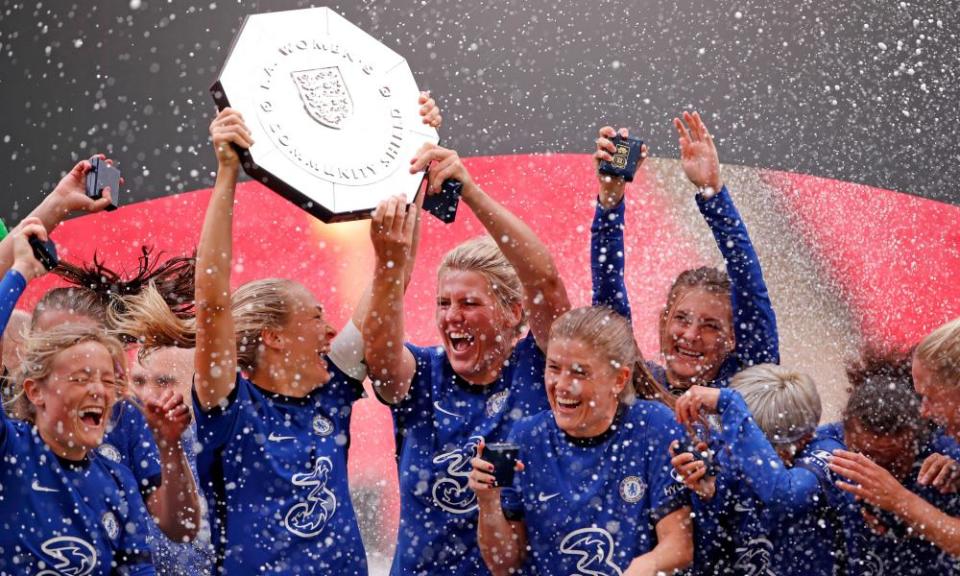Women’s football set for huge increase in viewing figures globally

A new report has found that an increase in the accessibility of women’s football could lead to viewing figures shooting up by more than 350% globally.
The RunRepeat survey of 5,000 football fans published this week – as the world digested the plans for a breakaway men’s European Super League to be closely followed by a women’s tournament – shows there is an appetite for regular access to professional women’s football.
Related: European Super League could end up halting growth of women’s game | Suzanne Wrack
RunRepeat found women’s football should get a 296.7% increase in the UK if on TV, while in the EU the increase could be as high as 358.7% and 304.6% in the US. The survey comes on the back of the £8m-per-season deal for the broadcast rights to the Women’s Super League, which will involve women’s top-flight matches being aired on BBC One and BBC Two and across the main Sky Sports channels.
“It’s no surprise to me, no surprise at all,” said Dr Beth Fielding Lloyd, principal lecturer in the academy of sport and physical activity at Sheffield Hallam University whose work includes research into media coverage of women’s sports. “The new broadcast deal is providing routine coverage and British audiences – male, female, football, non-football, whatever – will just come to expect that the sport is there and that it is now part of our sporting cultural landscape.”
The report, which also found 61.9% of people who watch women’s football in the UK are men and that 34.4% of men and 27.1% of women would watch women’s league football it if was on TV, is timely given the huge exposure games will get as a result of the new broadcast rights deal in which league games move from the BBC Sport red button and fringe channels and BT Sports on the BBC’s main free-to-air channels as well as on Sky Sports.
“Red button coverage is largely inconsequential I would argue, because you have to seek it out,” said Fielding-Lloyd. “That’s the same for social media coverage, you have to already be in it to see it. That’s not good enough for women’s football, it needs to be routine and it needs to be invested in.
“I get frustrated when people say there is no audience for women’s football, that is because it’s not been invested in, it’s not been built. The English Premier League has obviously had significant investment over decades, it didn’t just exist. It was built and built and invested in and women’s football needs that time.”

 Yahoo Finance
Yahoo Finance 